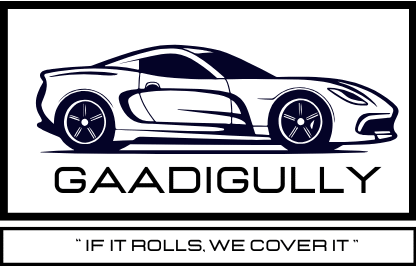
Purchasing a used car can be a wise financial move—if you know what to watch for. While many pre-owned vehicles provide excellent value, others may hide serious issues like undisclosed damage, lack of maintenance, or questionable histories. That’s why staying informed and vigilant is essential.
Incomplete or Irregular Maintenance History
A well-maintained vehicle usually comes with a detailed service history. If the seller can’t provide maintenance records or if there are noticeable gaps between services, it might indicate neglect or poor upkeep.
Red Flag : No proof of oil changes, brake checks or periodic servicing
Paint Irregularities or Panel Differences
Differences in paint color or texture can be a sign that the car was repaired after an accident. While small cosmetic fixes are fairly common, noticeable paint mismatches could point to more serious past damage.
Red Flag : Panels that appear newer than the rest of the vehicle, or show variations in shine and texture.
Abnormal Engine Noises or Vibrations
Turn on the engine and listen closely. Knocking, ticking, or grinding sounds may signal major engine problems or worn parts.
Red Flag : Loud startup noises, uneven idling, or strong engine vibrations
Signs That Suggest Water Damage
Vehicles damaged by floods are often cleaned and resold, but hidden moisture can ruin electrical systems and cause rust in hard-to-see places.
Red Flag : A musty smell, damp carpets, foggy headlights, or rust beneath the seats
Altered Odometer
Odometer rollback is a frequent scam aimed at making a car appear to have lower mileage than it actually does.
Red Flag : Worn pedals or a faded steering wheel in a low-mileage car
Dashboard Warning Indicators
If the check engine light or other warning indicators are on — or if they fail to light up during startup — it’s a strong sign that something may be wrong.
Red Flag : Dashboard lights that remain on or fail to appear when you turn the key can signal underlying issues.
Unusually Low Price
If the price seems unusually low, there’s likely a reason. It could be covering up hidden damage, a history of accidents, or a salvaged title.
Red Flag : Car priced well below market value with no obvious explanation.
Overly Aggressive or Avoidant Sellers
If the seller is pressuring you to decide quickly, dodging your questions, or refusing a third-party inspection, it’s best to walk away. Honest and transparent communication is essential.
Red Flag : This deal won’t last long” or refusing to allow a thorough inspection are major warning signs.
Let’s discuss what an average person can do to determine if a used car is a good purchase or not.
Look at the Exterior:
- Check for dents, scratches, rust, and uneven paint.
- Open the doors and trunk to see if they close properly.
- Look for signs of repairs like mismatched panels or paint.
Check the Tires:
Make sure tires have enough tread and are evenly worn. Uneven wear could mean alignment issues.
Inspect the Interior:
Look for water stains, musty smells, or damaged upholstery.Test all electronics: lights, windows, air conditioning, radio.
Start the Engine:
Listen for unusual noises like knocking, ticking, or rattling. Check for excessive smoke from the exhaust.
Test Drive:
Notice how the car accelerates, brakes, and handles turns. Pay attention to vibrations or strange sounds.
Look Under the Hood:
Check for leaks, corrosion, or loose wires.
Hire A mechanic :
You can book a car inspection through a reputable automotive service platform, which will send a trained mechanic to inspect the vehicle using a detailed checklist. They will then provide you with a report and a recommendation on whether the car is a good purchase. These platforms also assist in verifying the car’s documents for added peace of mind.



h4o1x1